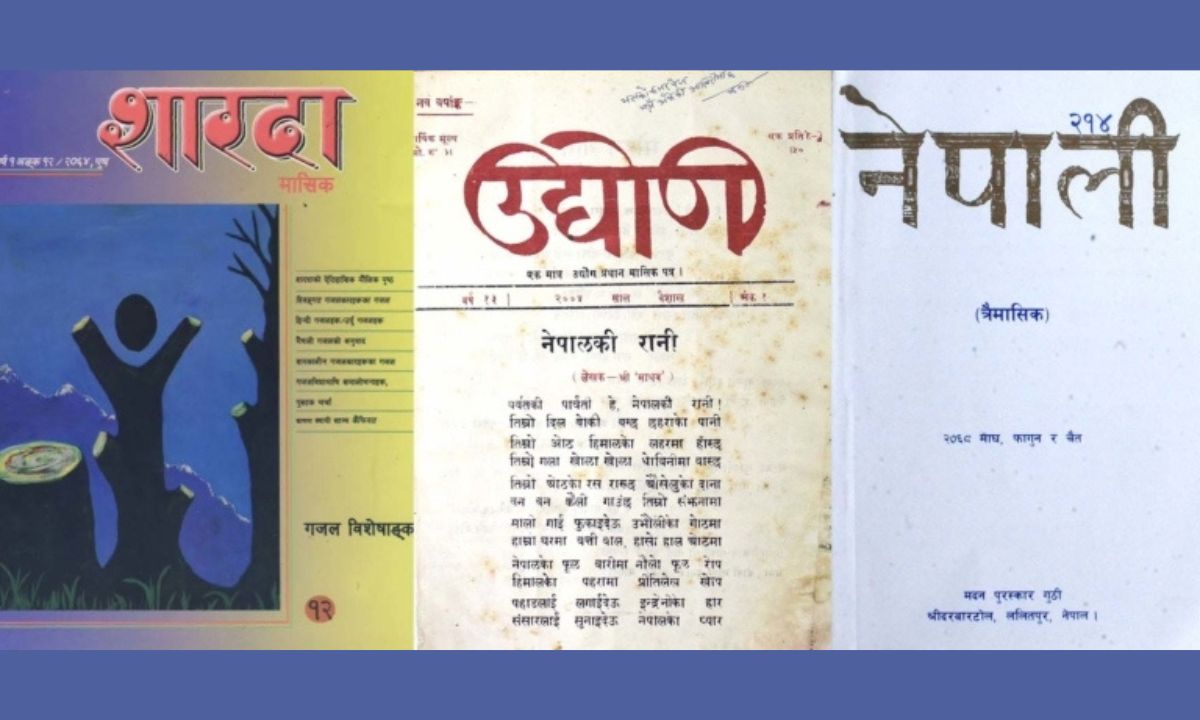The story of Nepali magazines begins not with a publication, but with a machine—the Vulture Press. In 1851, Jung Bahadur Rana, Nepal’s first Rana Prime Minister, returned from his grand Europe tour with this printing press, marking the birth of modern printing in Nepal. However, for decades, it was used only for official notices and religious texts. The idea of a magazine—a regular publication with essays, stories, and news—had not yet taken root.
1898: The Birth of Nepal’s First Magazine
Nearly 50 years after the printing press arrived, Nepal saw its first recognized magazine—Sudha Sagar (Ocean of Nectar), edited by Pandit Nardev Moti Krishna Sharma in Kathmandu. Before this, there were claims of an earlier magazine, Gorkha Bharat Jiwan (1886), edited by the legendary poet Motiram Bhatta in Varanasi. However, no physical copy has ever been found, leaving Sudha Sagar as the undisputed pioneer.
1901: The Rise of Gorkhapatra and Beyond
Just three years after Sudha Sagar, the same editor launched Gorkhapatra, which started as a magazine-like publication before evolving into Nepal’s first and longest-running newspaper. Around the same time, Nepali-language magazines began appearing outside Nepal, particularly in Indian cities with Nepali-speaking populations.
- Gorkhe Khabar Kagat (1899, Darjeeling) – A weekly edited by Ganga Prasad Pradhan, it ran for an impressive 30 years.
- Upanyas Tarangini (1902, Varanasi) – Focused on serialized novels but faded quickly.
- Sundari (1908, Varanasi) – The first true Nepali literary magazine, introducing simplified Nepali prose.
The 1910s-1940s: A Flourishing of Nepali Magazines Abroad
Since Nepal’s Rana regime heavily censored publications, many Nepali intellectuals launched magazines in India. These played a crucial role in preserving and promoting Nepali literature.
- Madhavi (1910, Varanasi) – Edited secretly under a pseudonym by linguist Ram Mani Acharya Dixit, it pioneered literary prose in Nepali.
- Gorkhali (1918, Varanasi) – Edited by young Surya Bikram Gyawali, it became a voice for Nepali expatriates.
- Gorkha Sansar & Tarun Gorkha (1928-31, Dehradun) – Edited by Thakur Chandan Singh, these weeklies kept Nepali literature alive.
- Bharati (1949-57, Darjeeling) – A major literary force, it connected Nepali writers across India and Burma.
Inside Nepal: Censorship and the Struggle for Free Press
While magazines thrived abroad, Nepal’s Rana rulers tightly controlled publications. Sharada (1934-1962), founded by Hriddhi Bahadur Malla, became the most influential magazine of its time—but not without struggles. Every article had to pass through a censorship committee before publication.
Another notable magazine, Udhyog (1935-1951), started as a business journal but later included literature. Remarkably, it survived despite the Rana regime’s strict laws—even its cover, featuring bullets targeting “unemployment,” was a bold statement for its time.
The 1950s-60s: A New Era After the Fall of the Ranas
After the Rana regime ended in 1951, Nepal saw a surge in literary magazines:
- Pragati (1954-57) – Edited by Narayan Prasad Baskota, it revived progressive literature with support from Mahakavi Laxmi Prasad Devkota.
- Ruprekha (1961-82) – Nepal’s longest-running literary magazine, setting standards for quality and consistency.
- Madhuparka (1960s-Present) – Backed by the royal family, it became a major cultural publication.
A Legacy of Resilience
From Sudha Sagar in 1898 to Ruprekha , Nepali magazines have weathered censorship, financial struggles, and political changes. They have nurtured generations of writers, preserved the Nepali language, and shaped the nation’s intellectual identity. Though many magazines came and went, their legacy lives on in Nepal’s vibrant literary culture.







